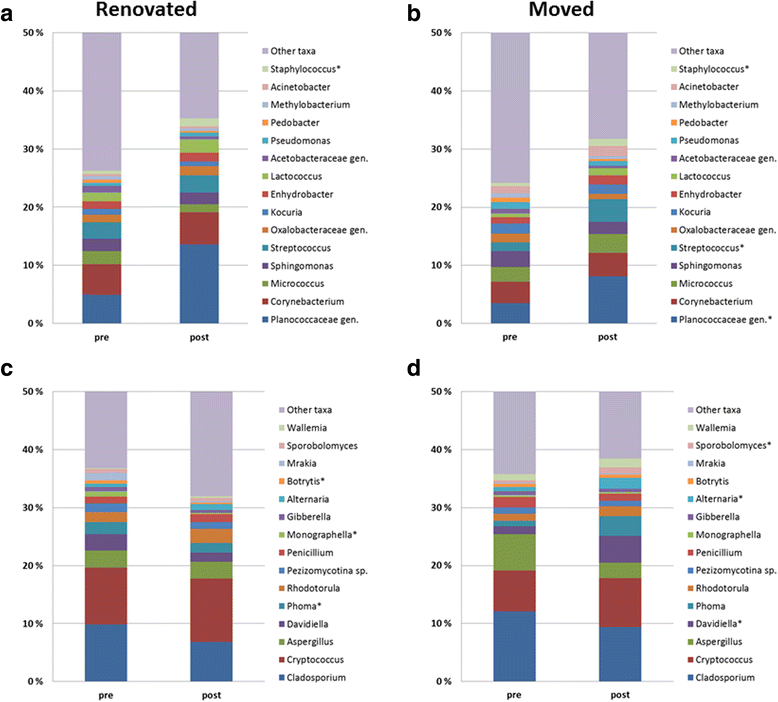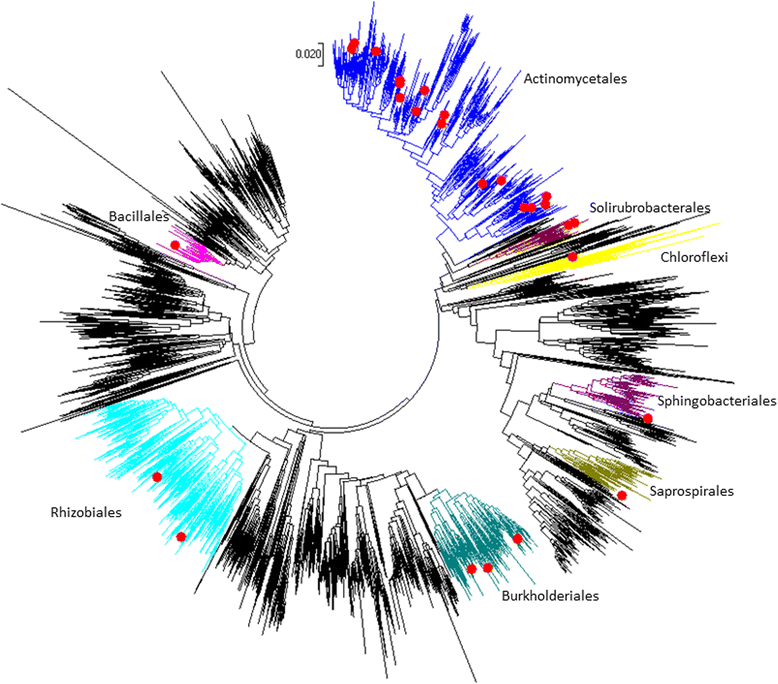For those interested in microbiology of the built environment this paper seems definitely worth checking out:
Indoor microbiota in severely moisture damaged homes and the impact of interventions.
Jayaprakash B, Adams RI, Kirjavainen P, Karvonen A, Vepsäläinen A, Valkonen M, Järvi K, Sulyok M, Pekkanen J, Hyvärinen A, Täubel M. Microbiome. 2017 Oct 13; 5(1):138
Abstract and some figures are below:
ABSTRACT
BACKGROUND: The limited understanding of microbial characteristics in moisture-damaged buildings impedes efforts to clarify which adverse health effects in the occupants are associated with the damage and to develop effective building intervention strategies. The objectives of this current study were (i) to characterize fungal and bacterial microbiota in house dust of severely moisture-damaged residences, (ii) to identify microbial taxa associated with moisture damage renovations, and (iii) to test whether the associations between the identified taxa and moisture damage are replicable in another cohort of homes. We applied bacterial 16S rRNA gene and fungal ITS amplicon sequencing complemented with quantitative PCR and chemical-analytical approaches to samples of house dust, and also performed traditional cultivation of bacteria and fungi from building material samples.
RESULTS: Active microbial growth on building materials had significant though small influence on the house dust bacterial and fungal communities. Moisture damage interventions-including actual renovation of damaged homes and cases where families moved to another home-had only a subtle effect on bacterial community structure, seen as shifts in abundance weighted bacterial profiles after intervention. While bacterial and fungal species richness were reduced in homes that were renovated, they were not reduced for families that moved houses. Using different discriminant analysis tools, we were able identify taxa that were significantly reduced in relative abundance during renovation of moisture damage. For bacteria, the majority of candidates belonged to different families within the Actinomycetales order. Results for fungi were overall less consistent. A replication study in approximately 400 homes highlighted some of the identified taxa, confirming associations with observations of moisture damage and mold.
CONCLUSIONS: The present study is one of the first studies to analyze changes in microbiota due to moisture damage interventions using high-throughput sequencing. Our results suggest that effects of moisture damage and moisture damage interventions may appear as changes in the abundance of individual, less common, and especially bacterial taxa, rather than in overall community structure.


